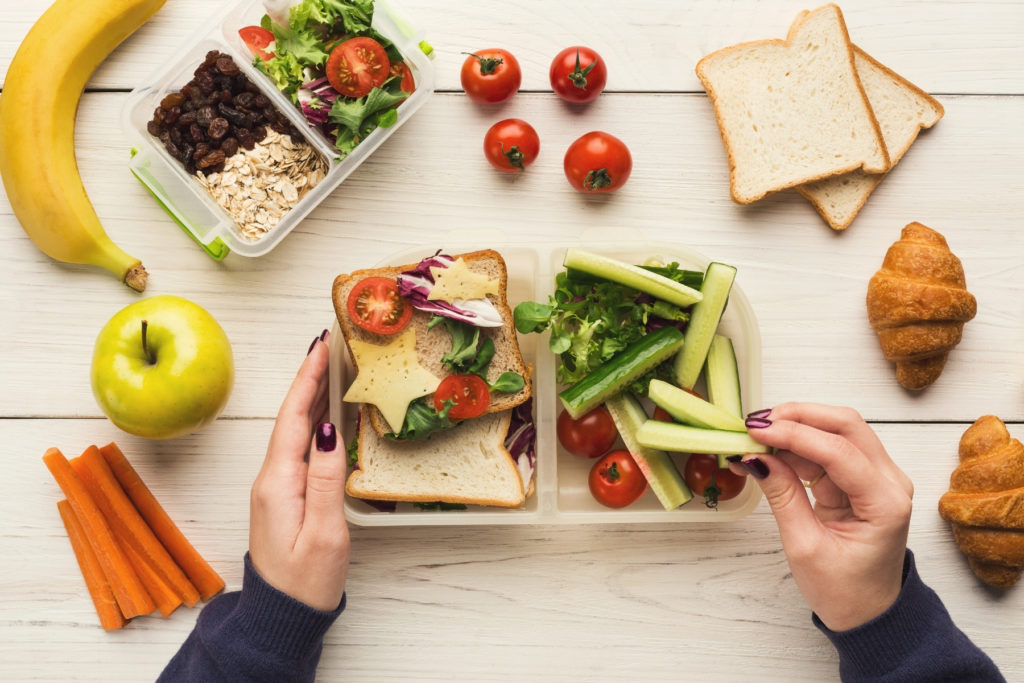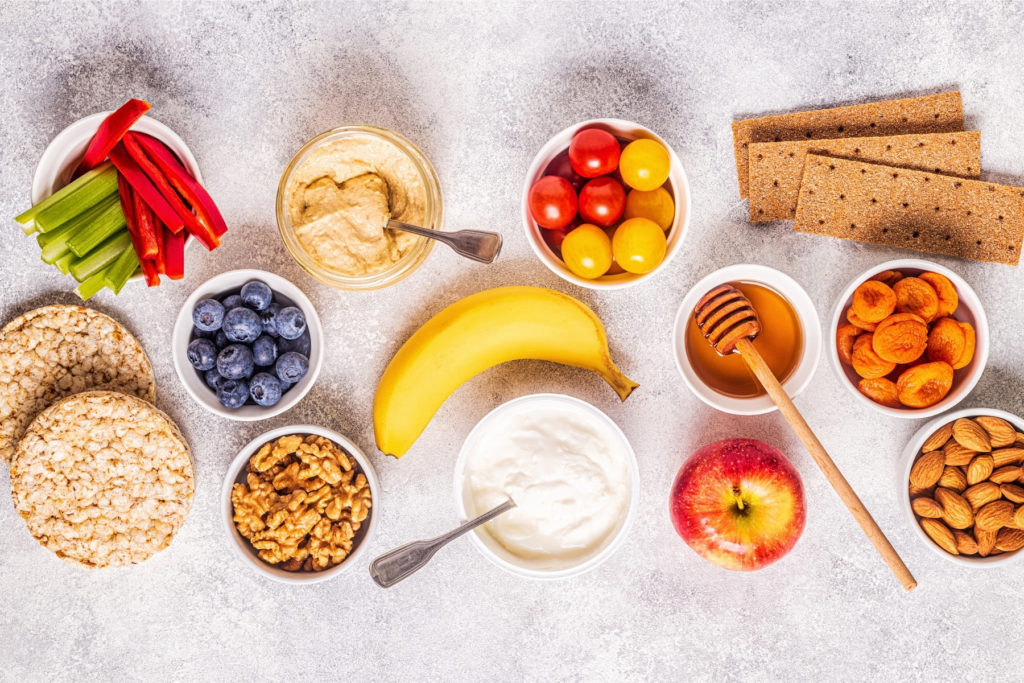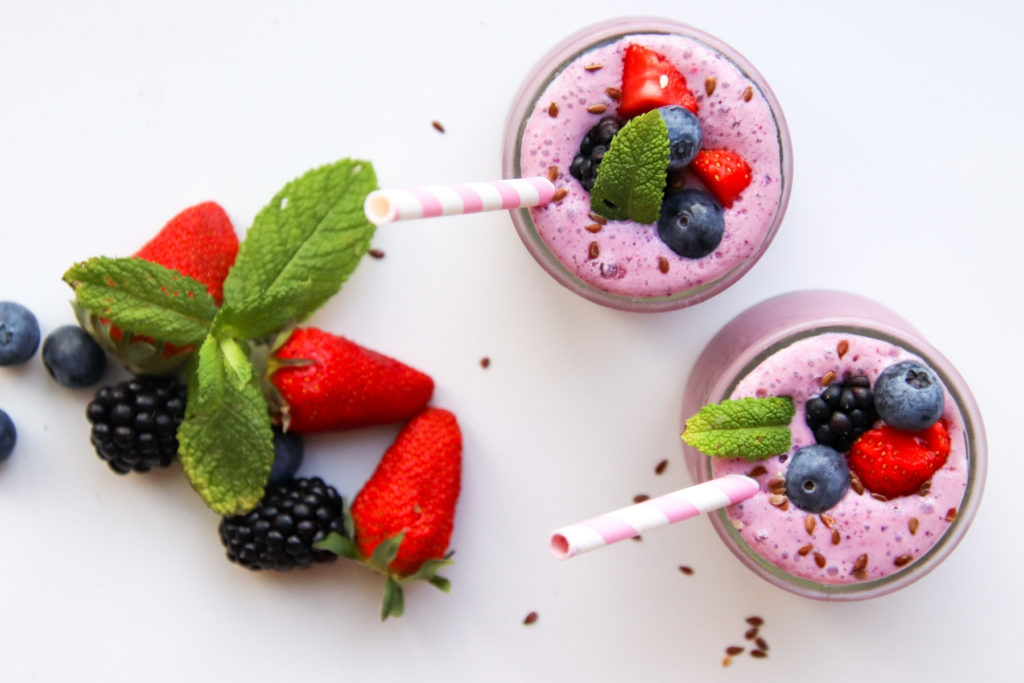What Makes a Healthy Snack?
October 12, 2021

What do healthy snacks look like? Snacking is SO underrated. Regularly snacking can help you meet your nutritional needs, avoid over-snacking later on, and can help you stay focused and energized. Snacking is so essential, that it is often one of the most common healthy eating habits that we work on with clients.
Why Snacking is Important
Too often we hear clients ask, “is snacking bad for you?”. Unfortunately, there has been an interest in the benefits of NOT snacking. This interest stems from intermittent fasting and it’s claimed benefits that have gained popularity in recent years. However, this idea couldn’t be further from what we recommend.
There are many physical and mental benefits to healthy snacking. Without snacking, it can be hard for athletes to fuel for, and recover from a workout. Pre-workout and post-workout snacks help sustain energy, improve immunity, optimize muscle/strength gains, prevent injury, and can support fitness goals. Curious about the best pre-workout and post-workout snacks for you? Click here to read our other blog post about What to Eat Before and After a Workout.
Snacking can provide long-term benefits as well. Active individuals have higher daily energy needs, i.e. require more energy each day for optimal health and exercise performance. Meeting these needs can be difficult to achieve without snacking. Inadequate energy intake can lead to long-term health consequences including hormone, heart, autoimmune, and bone density issues. Regular, healthy snacking can even help to stabilize blood sugars, reducing the risk of diabetes and metabolic concerns.
What Do Healthy Snacks Look Like?
First off, it’s important to remember what healthy snacks shouldn’t look like. Diet culture has popularized low calorie snacks like 100 calorie snack packs making us believe these are healthy snack options. In reality, a snack should help you meet your nutrition needs and keep you satisfied until your next meal. Despite what we are led to believe, 100 calories typically can’t fulfill either of these needs. The next time you reach for a snack, use our top 3 recommendations when it comes to choosing a healthy snack:

1. Keep your daily needs in mind
The purpose of a snack is to help you meet your nutrition needs and stay satisfied between meals. Active women need at least 2200 calories/day and men, at least 2500 calories/day. With the typical 3 meal schedule, snacks often fall between 150-350 calories. This does not mean count the calories in your snacks, that is the LAST thing we want you to do. Rather than focusing on choosing a low-calorie snack, consider your unique needs, and choose a snack that will help you meet those needs. You can use this easy harris benedict online calculator to get an accurate idea of your daily calorie needs.
2. Pair food groups for optimal satisfaction
An easy rule of thumb is pairing two or more of the four food groups (fruits/vegetables, grains, meat/meat alternatives, and dairy) to make a more satisfying and nutritious snack. Building a snack this way can help you get a variety of nutrients in your diet. For example, if you’re craving popcorn (a grain), pair it with almonds or trail mix (a meat alternative). Craving a brownie? Pair it with a glass of milk to keep you satisfied for longer. When you’re not sure what to pair with a snack, a piece of fruit is always a great, easy option. You can also try out some of the healthy snack recipes on the blog like these 5 Quick and Easy Post Workout Shakes, which can be a great choice any time of day.

Snack size will also vary based on your meal and workout schedule, preferences, and what your daily routine looks like. Further, snack size will depend on the amount of time between meals. A snack between meals that are 6+ hours apart will be bigger than a snack right before a workout or within an hour of a meal.
2. Make intuitive choices
Lastly, don’t be afraid to listen to your cravings. Listening to your cravings in the moment can actually help to decrease cravings in the future. Letting your cravings take the lead can make healthy eating more sustainable, and can make eating in general, more enjoyable.
Key Takeaways
Snacking IS healthy and doesn’t have to be complicated. Listen to your body, but choose snack options that will fit your needs and support you as an athlete. Our three top recommendations for choosing a healthy snack will help you choose snacks intuitively that leave you feeling satisfied and fueled.
Looking for guidance on how to start your intuitive eating journey and develop a healthy relationship with food and your body? Learn more about our non-diet sports dietitians today and how they can help support you here.
[…] fill in the final 1-2 meal (or snack) slots with takeout to give yourself a break from the kitchen and more time to take it […]
[…] protein that are an appropriate size. In addition, eating three of these well balanced meals with a few snacks in between each day will help you to avoid under-eating without focusing on […]